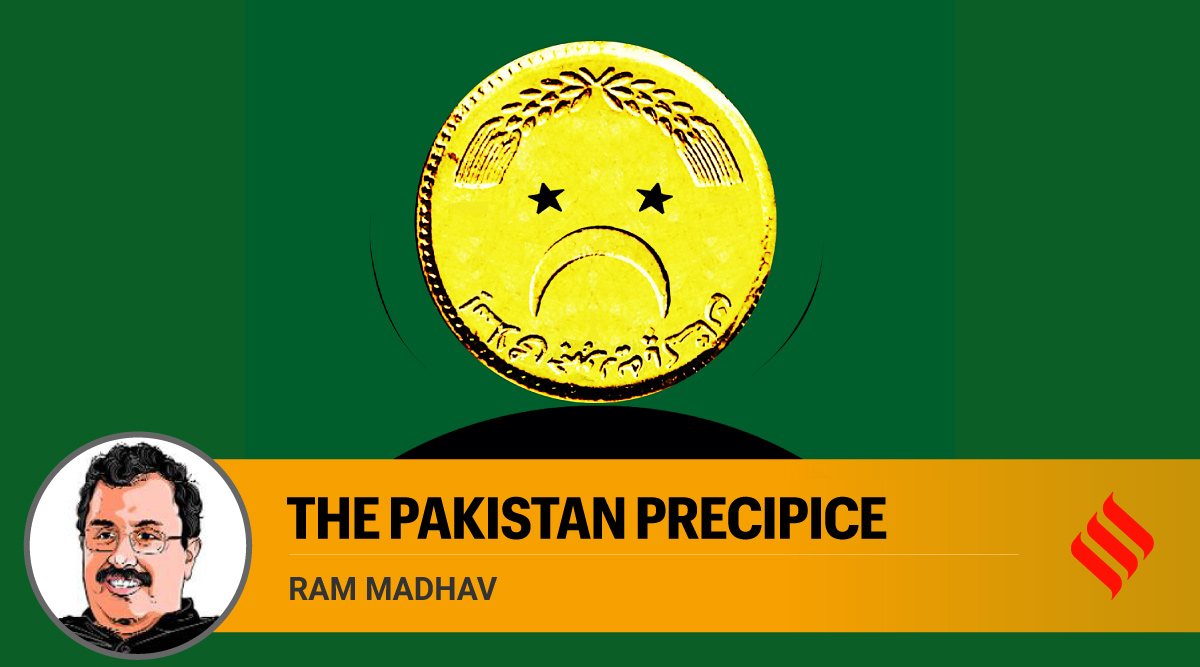Ram Madhav

“We will eat grass, even go hungry,” Zulfikar Ali Bhutto, as foreign minister in Ayub Khan’s government in Pakistan, famously declared in 1964, insisting that his country would go nuclear. Six decades after that infamous statement, his own Pakistan People’s Party (PPP) leaders lament that while they have the bomb, they have only grass to eat.
Pakistan is torn today between a sinking economy and surging terror. The snakes in their backyard, as Hillary Clinton warned during her Islamabad visit in 2011, came back to bite those who reared them. Yet, its leadership insists on fulfilling Bhutto’s prophecy — “Pakistan will fight for a thousand years” against India.
In its existence of over seven decades, Pakistan couldn’t build a stable polity. It remains the only country under the longest spell of military control in South Asia, whereas even smaller countries like Bhutan graduated successfully to democracy. Bangladesh, which parted ways with Pakistan in 1971, built an enduring democracy, sending its army back to the barracks through strong popular will in the 1990s.
Pakistan reeled under direct military dictatorships for half of its independent existence. Until 2013, there was no democratic transfer of power from one elected government to the other. Even after 2008, when General Pervez Musharraf allowed a democratic government to come to power, the military leadership wielded real control. Imran Khan, the ousted prime minister, claimed recently that the then army chief Qamar Bajwa was responsible for his removal. “What General Bajwa did to Pakistan even an enemy could not have done,” Khan lamented, accusing the general of playing a “double game”.
This political instability has resulted in the gross neglect of the economic fundamentals. Initially, during the Cold War, it courted the US. Once the Cold War ended, America’s Afghanistan intervention came as a boon. Then came China with its CPEC project. The country’s leadership thrived on this rentier economy, taking money from whoever was willing to pay for sundry services. But when the US decided to withdraw from Afghanistan, and Europe and Islamic countries started distancing themselves from the Pakistani leadership for its involvement in global terror infrastructure, the country suddenly started feeling the heat.
Today, its mismanagement has landed the country in a debt trap. Forty-two per cent of its budget goes into debt servicing. Inflation is at an all-time high of 30 per cent. The dollar is pegged at 265-270 Pakistan rupees. Foreign reserves have reached a precarious level, causing panic about a possible default. Food shortages are hitting the countryside hard.
Pakistan is a classic case of a visionless and directionless economy. With a population of 220 million, and close to four million added each year, the country’s economic establishment is in complete shambles. GDP growth rates hover around a low 2.4 per cent, while poverty levels are as high as 35 per cent. Another 35 per cent live on subsistence incomes, vulnerable to calamities, natural or manmade.
Although Pakistan is an agrarian economy, the country’s leadership has paid the least attention to the sector. While it went to international tribunals complaining against India regarding the Indus Water Treaty, it did not build a single dam to irrigate its lands. The result is annual flooding on the one hand and water evaporation on the other. Pakistan has no major agri-industrial activity and continues to import cooking oils, cotton, wheat, onion, tomato etc. The only exports are in paddy, while it imports everything from petroleum products to electronics to computers throughout the year. As an agriculture-based economy, it didn’t even build a single major pesticide factory. The result of this mismanagement is that only 22 per cent of its GDP comes from agriculture, out of which only 8 per cent comes from actual farming. Of the productive farming, only 20 per cent is commercially exploited, while the rest is for the consumption of the poor farmers who hold small tracts of land.
Like other South Asian nations, including India and Bangladesh, Pakistan too boasts a massive young population. Unfortunately, it is mostly unskilled and unproductive. Of the 26 million that enrol in primary schools, only 2-3 million reach matriculation level. Almost 22-23 million drop out at the primary level.
The only industry that thrives in such a scenario is lawlessness and terrorism. Pakistan is the only country in the world that has 126 UN-designated terrorists and 27 outfits declared unlawful by the UN.
What Pakistan badly needs today is a leadership that turns its attention to these fundamental structural challenges. If such a leadership rises in that country, India would surely be willing to work with it. Prime Minister Narendra Modi told Imran Khan on the eve of his victory in the Pakistan National Assembly elections in July 2018 that India was “ready to enter a new era of relations with Pakistan” and suggested that both countries should “fight poverty jointly”.
Sadly, the Pakistani leadership refuses to accept this olive branch. Even as the country stands on the verge of imminent default and economic collapse, the leadership remains adamant in its rhetoric of conflict with India.
Instead of emulating Modi’s progressive policies based on the Atmanirbhar principle that built strong economic fundamentals to catapult India into the league of superpowers, Pakistan’s leaders revel in abusing and insulting him. They don’t miss an opportunity to return to their pet, yet futile, theme of Kashmir.
General K Sundarji once said that India’s strength is India’s strength minus Pakistan’s strength. Militarily, India has grown stronger since then and is in a position to tackle China and Pakistan simultaneously. Yet, it always strove for peace along the LoC and Indo-Pak border. The guns fell silent for over a year along this border, which is heartening.
But the other silence, across the political and diplomatic fence, is deafening. It can break if Pakistan gets a leadership that is willing to work with India in fighting the fundamental structural challenges and not across the border — directly, or through its proxies.
No comments:
Post a Comment